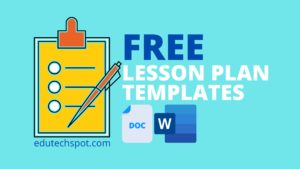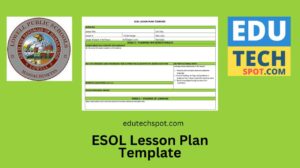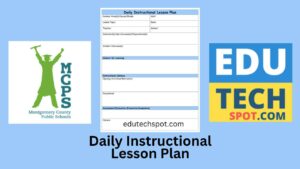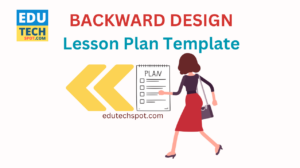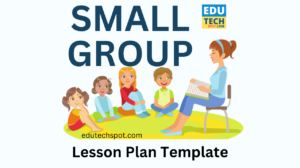Physical Education Lesson Plan Template that you can use for free is here to download. Entering the world of education, having a good Physical Education Lesson Plan Template is really important. This tool helps teachers plan lessons in a simpler way and ensures that lessons are interesting and cover everything. When lesson planning, As we look into making good lesson plans, understanding a helpful Physical Education Lesson Plan is really important. This helps us figure out the most important parts that make a lesson plan work well, like being able to change things, including everyone, and having a good order for activities. Let’s explore these important parts together to see how a Physical Education Lesson Plan can make learning interesting and good for students.
Physical Education Lesson Plan Template to Download in Word Format

View / Copy / Download in Word Format
Introduction: Setting the Stage for Holistic Physical Education
Physical education serves as a cornerstone in the holistic development of students, promoting physical fitness, cognitive growth, and affective skills. This Physical Education Lesson Plan for Individual Track and Field (Hurdling) for Grades 8-9 exemplifies a meticulously crafted instructional guide designed to engage students in a dynamic and skill-intensive learning experience.
Lesson Organization: A Well-Structured Framework
The lesson plan’s structure is marked by clarity, offering a well-defined format that includes essential details such as lesson number, unit, instructors, and equipment requirements. This organizational framework lays the groundwork for effective lesson delivery, ensuring instructors are adequately prepared for a seamless teaching experience.
Thematic Focus: Individual Track and Field – Hurdling for Grades 8-9
The lesson revolves around the theme of individual track and field, with a specific emphasis on hurdling. This choice aligns with the physical education curriculum and introduces students to a specialized skill set within the broader context of athletics. The plan caters to the needs of Grades 8-9 students, considering their developmental stage and physical capabilities.
Movement Concepts and Skill Focus: A Holistic Approach
The movement concepts and skill focus section provides a comprehensive overview of the targeted learning outcomes, categorizing these into body, relational, locomotion, and manipulative/non-manipulative skills. The incorporation of safety considerations underscores the commitment to a well-organized and secure learning environment.
Lesson Objectives: Addressing Psychomotor, Cognitive, and Affective Domains
The lesson objectives are outlined with precision, encompassing psychomotor, cognitive, and affective domains. From mastering running techniques to evaluating peer performance, the objectives are designed to foster a well-rounded understanding of both individual skills and collaborative learning. This multi-dimensional approach aligns with contemporary educational theories emphasizing the importance of addressing diverse learning styles.
Lesson Progression: A Logical Flow of Activities
The lesson unfolds in a logical progression, starting with a set induction that introduces key concepts and engages students from the outset. The warm-up activity, named “Spring Training,” cleverly integrates different locomotion techniques, ensuring a dynamic and enjoyable start to the lesson. This strategy not only serves the purpose of physical preparation but also establishes a link between the set induction and the main skill development section.
Skill and Movement Development: Mastering Running and Hurdling Techniques
The skill and movement development section is the heart of the lesson, where students are guided through the intricacies of running and hurdling. The emphasis on proper technique, demonstrated through various activities and drills, showcases a commitment to skill mastery. The incorporation of questioning techniques during the session not only checks for understanding but also encourages students to think critically about the mechanics of running and hurdling.
Adaptability: Tailoring the Lesson for Diverse Learners
One noteworthy aspect of the lesson plan is its adaptability. The inclusion of variations in activities, such as reducing or increasing hurdle height, allows for differentiation based on students’ skill levels. This adaptability ensures that the lesson caters to a diverse range of abilities, promoting inclusivity in physical education.
Culmination: Adding Excitement and Competition
The culmination of the lesson in the “Hurdles for Gold” activity adds an element of excitement and competition. This team-based relay not only reinforces the skills learned but also introduces an element of strategic thinking and collaboration, aligning with the affective objectives outlined in the lesson plan.
Cool Down: Structured Conclusion to the Lesson
The cool-down segment, named “Walk of Life,” provides a structured conclusion to the lesson, incorporating various forms of locomotion. This serves the dual purpose of cooling down the body and reinforcing the importance of diverse movement patterns.
Closure and Assessment Techniques: Reflecting on Key Points and Evaluation
In terms of assessment, the lesson plan incorporates a variety of techniques, including verbal feedback, peer evaluations, and checking for understanding questions. This multifaceted approach acknowledges the complexity of assessing physical education and recognizes the value of both self-reflection and peer engagement in the learning process.
Inclusivity and Special Needs Considerations: Ensuring Participation for All
The plan also demonstrates a commitment to inclusion and adaptability. Non-participants are assigned roles, fostering a sense of involvement and responsibility. Special needs are addressed with a tailored approach, emphasizing cognitive aspects for students with mobility issues.
Interdisciplinary Themes: Connecting Physical Education with Other Disciplines
Interdisciplinary themes, such as musicality in teaching hurdling rhythm, highlight the interconnected nature of learning. This not only adds a creative dimension to the lesson but also underscores the potential for cross-disciplinary collaboration in education.
Conclusion: A Rich and Engaging Learning Experience
In conclusion, this Physical Education Lesson Plan for Individual Track and Field (Hurdling) for Grades 8-9 is a well-crafted and comprehensive guide that reflects contemporary pedagogical principles. Its structured format, clear objectives, thoughtful progression, adaptability, and commitment to diverse learning styles contribute to its efficacy in providing a rich and engaging learning experience for students in the realm of physical education.

